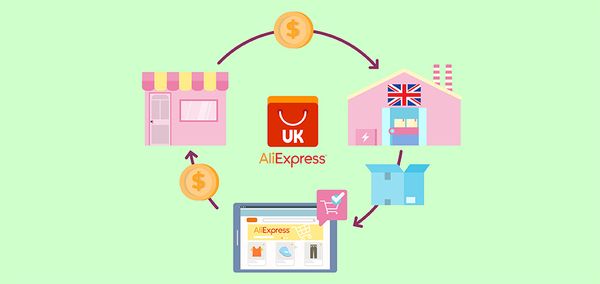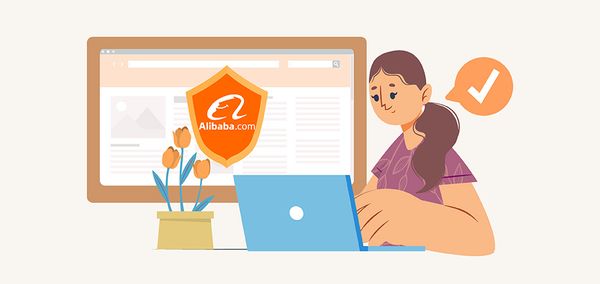Mastering Dropshipping Pricing: 5 Best Strategies for Success 2024

Updated by March 18,2024
Assume that you have decided on product categories to sell in your dropshipping store, the next big concern is to price your products. Appropriate dropshipping pricing decisions will make your business profitable and competitive while wrong product selling prices can result in financial loss and even can break your business.
In this article, you can check which factors dictate how your products are priced, what product pricing strategies are most popular and how DSers helps you price products for dropshipping to maximize your profit.
Factors to Consider for Dropshipping Pricing
Here are some factors that you are likely to consider when you price your dropshipping products.
Product Cost
Product cost is the price that your supplier charges you. For example, if you pay $4 for a supplier product, then the product cost of that product is $4. It's essential to regularly review and update your product costs as they can fluctuate due to changes in manufacturing costs, packaging costs and other costs associated with the supply side.
Shipping Fees
Shipping fees cover the shipping expenses depending on the shipping origin, shipping destination and shipping provider that you assign to products. As your suppliers may ship from around the world and you may sell internationally, the chances are that the fees vary a lot. You need to be clear about your target countries or regions and shipping methods details for each product so that you can figure out shipping costs correctly.
Pro tip: As you want to benefit both you and your customers, you can refer to some popular dropshipping shipping calculations and choose the most cost-effective one.
| Get 3 Excellent Pricing Templates with the Best AliExpress Dropshipping Tool - DSers! |
Marketing Costs
As marketing is an effective way to expose your business, you may spend a lot of time on it and even pay money to advertise your brand, subscribe to a marketing tool or hire SEO experts to improve website performance. If that is the case, you must calculate the advertising costs and employment costs to reflect them in your product pricing.
Competitor Pricing
Dropshipping is not a new concept and there is a lot of competition. When you set prices for your chosen products, it is a good idea to track your competitors. You can investigate how many merchants are selling your target items, how much prices they charge for products and how much order volume they obtain. Once you have a knowledge of your product competition level, you can set a price for your products more appropriately.
Profit Margins
Profit margin is a financial metric that measures the profitability of a business relative to its revenue. It represents the percentage of revenue that is retained as profit after deducting all expenses related to producing and selling goods.
No matter how many costs you have to cover for your dropshipping business, profit margins can play a big part in making a profit, more than reaching break even. You need to learn whether your niche has a smaller or higher profit margin to know your industry standard and then set your own decent profit margin.
5 Best Dropshipping Pricing Strategies
Now that you know the considerations before you price your products, you can review the following pricing strategies and their pros and cons to make your informed decisions.
1. Cost-based Pricing
A cost-based pricing strategy refers to the price calculation by which you set the selling price of a product based on its costs, along with a fixed dollar or percentage markup. When you have many low-price products, a pricing strategy based on costs is a good way to set selling prices for them.
Cost-based pricing formula: Selling Price = Total Cost + Fixed Dollar/Percentage Markup
- Simple and straightforward to be applied to price products
- Cover all costs, helping to maintain profitability
- Lack of flexibility to respond to changes in costs or fluctuations in demand. If costs increase or decrease, it may take time to adjust prices accordingly, which may impact competitiveness.
- Ignore the perceived value of the product in the eyes of the customer, which may lead to underpricing or overpricing compared to the perceived value.
2. Bundle Pricing
This strategy is a pricing approach that involves offering multiple dropshipping products in a bundle at a discounted price. It is widely used to attract new customers, increase sales, and enhance customer value.
Bundle pricing formula: Selling Price = Sum of Individual Product Prices - Discount
- Improve the customer perceived value of customers as a set of related products in a bundle may make customers feel they receive more benefits compared to paying for the items separately
- Increase the average order value due to the bundled products being sold together as a single order
- Limit the customization experience of customers as they may have different preferences and may not want all the items in the bundle
- A risk that customers may opt for the discounted bundle rather than individual items, leading to lower total revenue
3. Perceived Value Pricing
This strategy allows you to set product prices based on the perceived value of a product rather than its actual costs and is often used for high-ticket products. It has no fixed formula that you can directly use but provides a tactical approach for dropshipping pricing.
It typically considers factors including brand image, product differentiation, market positioning and consumer preferences.
- Charge premium prices for products to increase profits
- Enhance brand differentiation by emphasizing the perceived value
- Limit the customer base to those who are not price-sensitive
- Difficult to implement as it requires a deep knowledge of brand recognition, consumer behaviours and market trends
4. Psychological Pricing
Psychological pricing is aimed at setting prices that can evoke psychological responses, such as perceiving the price as more affordable or of higher value. By applying specific price points, such as ending prices with the number 9 or 99, you can create a psychological impact on your customers.
Here are three different dropshipping pricing types regarding psychological pricing.
- Create a perception of a good deal to boost sales
- Enhance the perceived value of a product by associating it with a higher price point
- Lack of transparency that may lead to a loss of trust
- Once overused, customers will become aware that it is a pricing technique
- Has limited applicability because it may not suit all products
5. Tiered Pricing
Tiered pricing, also known as volume pricing or graduated pricing, is a pricing strategy you can take advantage of to set different price tiers for your dropshipping products based on various factors, such as quantity, usage, or customer segment.
- Encourage customers to buy larger volume products to meet a lower pricing tier threshold
- Cater to customers with varying needs and budgets to meet a wide range of audience
- Complex to apply as you need to set different price tiers based on a lot of analysis
- Create customer dissatisfaction if your pricing levels are not perceived as fair
How DSers Helps You Price Dropshipping Products for Success
As dropshipping pricing could be influenced by many elements that have been mentioned earlier in this article, you may wonder which factors you need to include in your pricing strategy. In addition, checking every detail for better pricing could exhaust your energy.
However, DSers, the AliExpress official partnership app, has provided you with an excellent solution for this hassle. With this app, you can not only have access to useful product pricing templates designed for different needs but also easily check what you want to refer to while pricing products.
Automatically Apply Store-based Product Pricing Templates
Considering that your products differ in types, positioning and target audience, you may need to set different pricing rules respectively, which can be inefficient especially when you have a lot of stores and products. For this case, DSers Pricing Rule feature enables you to access 3 kinds of dropshipping pricing formulas and set store-based pricing rules for products which can be automatically applied to products while pushed to your online store.
To set your own pricing rules, first, go to DSers dashboard and access Pricing Rule in the Settings page. Then turn on the button for the store you desire and choose from the three options: Basic pricing rule, Standard pricing rule, and Advanced pricing rule. Plus, you can set the Assign cents part if you want to use the psychological pricing strategy.
For more detailed steps to create your pricing strategies based on the given templates, check this guide.
Easily Check Product and Shipping Cost While Setting Product Prices
On some occasions, there is not an existing pricing template that suits your needs, you can price products based on your review of every possible cost and expected profit. As dropshipping product cost and shipping cost are two basic points that you may need to consider, DSers allows you to check them when you edit the product prices.
Before you can edit the prices of product variants, go to the Import List page and click the Edit icon to access the Edit Product Detail card. Next, access the Variants tab and check the product cost and shipping cost for each variant.
NOTE: To check the shipping cost, you need to determine the shipping origin, shipping destination and shipping provider for this product.
Set Taxes for Products with One Click
Due to customs regulations of some specific countries, your products may be charged taxes for trade across countries. To cover the taxes, you need to include them in your product pricing. DSers has taken it into consideration and developed a Tax feature that you can take advantage of.
To set your products as taxable, first, go to the Settings page and access the Product part. Then turn on the button to the right of "Set your products as taxable". Once set up, your products will be charged taxes automatically when they are sold.
Conclusion
By learning what you should consider when it comes to dropshipping pricing as well as some useful pricing strategies, you can know how to set smart product selling prices and make informed pricing decisions that ensure profitability while remaining competitive in the dropshipping market. Check more articles for droshipping tips, tools and practices in our DSers Blog.













 Company
Company
 Why Choose DSers
Why Choose DSers
 Blog
Blog
 Help Center
Help Center




 Live Chat
Live Chat